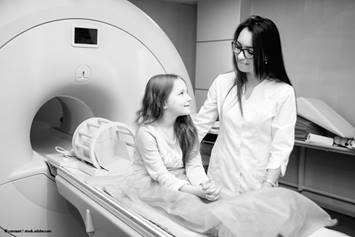Anencephaly
Anencephaly is a condition present at birth that affects the formation of the brain and the skull bones that surround the head. Anencephaly results in only minimal development of the brain.
What Is Anencephaly?
Anencephaly is a serious birth defect in which a fetus does not develop parts of the brain, skull and scalp.
This condition affects the central nervous system and is considered a neural tube defect (NTD). It occurs when the upper part of the neural tube does not close the right way. This leaves areas of the brain and spinal cord open to amniotic fluid and prevents tissue and bones from forming. This typically happens by the fourth week of pregnancy.
Anencephaly affects about 1 in 1,000 pregnancies in the United States. About 1 in every 5,000 to 10,000 babies is born with the condition.
How Does Anencephaly Affect my Baby?
Infants with anencephaly are born without the front part of the brain (forebrain) and large parts of the cerebrum and cerebellum, which control thinking, movement and the senses. In many cases, the brain tissue that is left is not covered by skin or bone.
Most pregnancies involving anencephaly end in miscarriage or stillbirth. Babies born with this congenital disorder may survive a few hours or days.
What Causes Anencephaly and Who Is at Risk?
The causes of anencephaly are not fully known. Itis possible it could be genetic or linked to environmental factors. Risk factors may include:
- Genes or chromosome changes
- Not getting enough folic acid before and during early pregnancy
- Exposure to environmental toxins
- Certain medicines and foods consumed during pregnancy
- A history of a pregnancy affected by anencephaly
How Is Anencephaly Diagnosed?
Anencephaly may be diagnosed during pregnancy through a routine ultrasound or blood screening.
Pregnancies involving anencephaly produce high levels of a specific fetal protein called alpha-fetoprotein. This protein is in the mother’s blood or amniotic fluid. Imaging may show missing parts of the brain or skull or abnormal facial features on the growing fetus.
Advanced testing may include:
- Anatomy ultrasound – to offer high-resolution images of the brain and surrounding structures
- MRI – to give more detailed images of the brain and skull
- Amniocentesis – to identify markers of abnormal development, such as chromosomal anomalies, elevated levels of alpha-fetoprotein or extra amniotic fluid
Sometimes anencephaly is diagnosed right after delivery, when the baby is born with brain or skull abnormalities.
Is Anencephaly Treatable or Curable?
There is no known treatment or cure for anencephaly. Infants with this condition rarely live longer than a few days.
Is Anencephaly Preventable?
It is not possible to prevent all cases of anencephaly. However, women can decrease their risk by taking enough folic acid before and during pregnancy. This can be done through diet or supplements. The Centers for Disease Control and Prevention (CDC) recommends women of all reproductive ages take 400 micrograms (mcg) of folic acid every day.
What Happens When Your Baby Is Born?
You should discuss your plans for labor and delivery with your obstetrician. Your perinatal palliative care team will work with your multidisciplinary delivery hospital team to plan for maternal, newborn, and family-centered care that is in line with your values, goals, and requests. The plan for how to care for your baby can evolve over time, as well.
Future Pregnancies
Your doctor may recommend genetic counseling to discuss risks for a future pregnancy. The Centers for Disease Control and Prevention (CDC) recommends a daily intake of 400 micrograms (mcg) of folic acid for all women of reproductive age.


